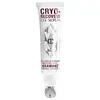What's inside
What's inside
 Key Ingredients
Key Ingredients

 Benefits
Benefits

 Concerns
Concerns

 Ingredients Side-by-side
Ingredients Side-by-side

Water
Skin ConditioningGlycereth-26
HumectantTriheptanoin
Skin ConditioningMaltodextrin
AbsorbentMethyl Gluceth-20
HumectantCamellia Oleifera Seed Oil
Skin ConditioningButyrospermum Parkii Oil
EmollientPhenoxyethanol
PreservativeAlcohol
AntimicrobialLecithin
EmollientCaesalpinia Spinosa Gum
Skin ConditioningDimethyl Isosorbide
SolventPolysorbate 20
EmulsifyingGlyceryl Stearate
EmollientSilica
AbrasiveOctyldodecyl Oleate
EmollientBenzyl Alcohol
PerfumingGlycerin
HumectantCaffeine
Skin ConditioningPEG-100 Stearate
Carbomer
Emulsion StabilisingOctyldodecyl Stearoyl Stearate
EmollientSodium Gluconate
Skin ConditioningSodium Hyaluronate
HumectantChondrus Crispus Extract
Skin ConditioningAscophyllum Nodosum Extract
Skin ConditioningEscin
TonicSodium Hydroxide
BufferingTocopheryl Acetate
AntioxidantAloe Barbadensis Leaf Juice
Skin ConditioningRosa Canina Fruit Extract
AstringentPolyhydroxystearic Acid
EmulsifyingOctyldodecanol
EmollientPotassium Phosphate
BufferingBiosaccharide Gum-4
Skin ConditioningPlumeria Alba Flower Extract
Skin ConditioningPlumeria Rubra Flower Extract
Skin ConditioningLithothamnion Calcareum Extract
Skin ConditioningParfum
MaskingWine
Skin ConditioningAmethyst Powder
AbrasiveMoonstone Powder
Skin ConditioningQuartz
AbrasiveRuby Powder
Skin ConditioningSolanum Tuberosum Pulp Extract
SmoothingAcetyl Tetrapeptide-11
Skin ConditioningAcetyl Tetrapeptide-9
Skin ConditioningCitric Acid
BufferingSodium Benzoate
MaskingPotassium Sorbate
PreservativeSuccinic Acid
BufferingDehydroacetic Acid
PreservativeLimonene
PerfumingGeraniol
PerfumingCitronellol
PerfumingLinalool
PerfumingWater, Glycereth-26, Triheptanoin, Maltodextrin, Methyl Gluceth-20, Camellia Oleifera Seed Oil, Butyrospermum Parkii Oil, Phenoxyethanol, Alcohol, Lecithin, Caesalpinia Spinosa Gum, Dimethyl Isosorbide, Polysorbate 20, Glyceryl Stearate, Silica, Octyldodecyl Oleate, Benzyl Alcohol, Glycerin, Caffeine, PEG-100 Stearate, Carbomer, Octyldodecyl Stearoyl Stearate, Sodium Gluconate, Sodium Hyaluronate, Chondrus Crispus Extract, Ascophyllum Nodosum Extract, Escin, Sodium Hydroxide, Tocopheryl Acetate, Aloe Barbadensis Leaf Juice, Rosa Canina Fruit Extract, Polyhydroxystearic Acid, Octyldodecanol, Potassium Phosphate, Biosaccharide Gum-4, Plumeria Alba Flower Extract, Plumeria Rubra Flower Extract, Lithothamnion Calcareum Extract, Parfum, Wine, Amethyst Powder, Moonstone Powder, Quartz, Ruby Powder, Solanum Tuberosum Pulp Extract, Acetyl Tetrapeptide-11, Acetyl Tetrapeptide-9, Citric Acid, Sodium Benzoate, Potassium Sorbate, Succinic Acid, Dehydroacetic Acid, Limonene, Geraniol, Citronellol, Linalool
Water
Skin ConditioningGlycerin
HumectantPropanediol
SolventHeptyl Undecylenate
EmollientBakuchiol
AntimicrobialPullulan
Palmitoyl Tripeptide-5
Skin ConditioningJasminum Sambac Flower Extract
MaskingCrataegus Monogyna Flower Extract
Skin ConditioningCamellia Sinensis Leaf Extract
AntimicrobialCaffeine
Skin ConditioningEthylhexylglycerin
Skin ConditioningCetearyl Alcohol
EmollientGlyceryl Stearate
EmollientSodium Carbomer
Emulsion StabilisingXanthan Gum
EmulsifyingStearic Acid
CleansingSodium Lauroyl Glutamate
Citric Acid
BufferingPhenoxyethanol
PreservativeWater, Glycerin, Propanediol, Heptyl Undecylenate, Bakuchiol, Pullulan, Palmitoyl Tripeptide-5, Jasminum Sambac Flower Extract, Crataegus Monogyna Flower Extract, Camellia Sinensis Leaf Extract, Caffeine, Ethylhexylglycerin, Cetearyl Alcohol, Glyceryl Stearate, Sodium Carbomer, Xanthan Gum, Stearic Acid, Sodium Lauroyl Glutamate, Citric Acid, Phenoxyethanol
Ingredients Explained
These ingredients are found in both products.
Ingredients higher up in an ingredient list are typically present in a larger amount.
Caffeine is most associated with coffee, tea, and cacao. In skincare, it helps with calming inflammation and is rich in antioxidants.
While caffeine is used to treat cellulite and and dark circles, further studies are needed to prove this. It has been believed to help with these skin conditions due to its ability to dilate blood vessels and increase blood flow.
Some studies are looking into caffeine's ability to protect against UV rays.
Learn more about CaffeineCitric Acid is an alpha hydroxy acid (AHA) naturally found in citrus fruits like oranges, lemons, and limes.
Like other AHAs, citric acid can exfoliate skin by breaking down the bonds that hold dead skin cells together. This helps reveal smoother and brighter skin underneath.
However, this exfoliating effect only happens at high concentrations (20%) which can be hard to find in cosmetic products.
Due to this, citric acid is usually included in small amounts as a pH adjuster. This helps keep products slightly more acidic and compatible with skin's natural pH.
In skincare formulas, citric acid can:
While it can provide some skin benefits, research shows lactic acid and glycolic acid are generally more effective and less irritating exfoliants.
Most citric acid used in skincare today is made by fermenting sugars (usually from molasses). This synthetic version is identical to the natural citrus form but easier to stabilize and use in formulations.
Read more about some other popular AHA's here:
Learn more about Citric AcidGlycerin is already naturally found in your skin. It helps moisturize and protect your skin.
A study from 2016 found glycerin to be more effective as a humectant than AHAs and hyaluronic acid.
As a humectant, it helps the skin stay hydrated by pulling moisture to your skin. The low molecular weight of glycerin allows it to pull moisture into the deeper layers of your skin.
Hydrated skin improves your skin barrier; Your skin barrier helps protect against irritants and bacteria.
Glycerin has also been found to have antimicrobial and antiviral properties. Due to these properties, glycerin is often used in wound and burn treatments.
In cosmetics, glycerin is usually derived from plants such as soybean or palm. However, it can also be sourced from animals, such as tallow or animal fat.
This ingredient is organic, colorless, odorless, and non-toxic.
Glycerin is the name for this ingredient in American English. British English uses Glycerol/Glycerine.
Learn more about GlycerinGlyceryl Stearate is a mix of glycerin and stearic acid.
It is used to stabilize the mixing of water and oil ingredients. By preventing these ingredients from separating, it can help elongate shelf life. It can also help thicken the product's texture.
As an emollient, it helps soften skin and supports barrier-replenishing ingredients.
In cosmetics, Glyceryl Stearate is often made from vegetable oils or synthetically produced.
This ingredient may not be fungal-acne safe
Fun fact: The human body also creates Glyceryl Stearate naturally.
Learn more about Glyceryl StearatePhenoxyethanol is a preservative that has germicide, antimicrobial, and aromatic properties. Studies show that phenoxyethanol can prevent microbial growth. By itself, it has a scent that is similar to that of a rose.
It's often used in formulations along with Caprylyl Glycol to preserve the shelf life of products.
Water. It's the most common cosmetic ingredient of all. You'll usually see it at the top of ingredient lists, meaning that it makes up the largest part of the product.
So why is it so popular? Water most often acts as a solvent - this means that it helps dissolve other ingredients into the formulation.
You'll also recognize water as that liquid we all need to stay alive. If you see this, drink a glass of water. Stay hydrated!
Learn more about Water